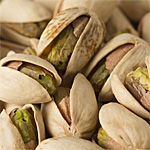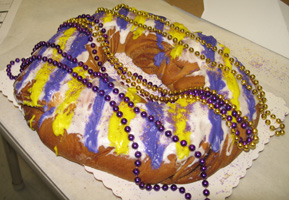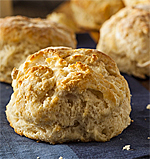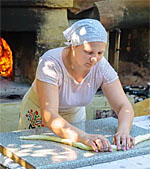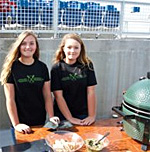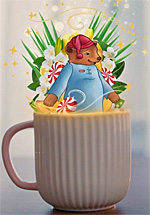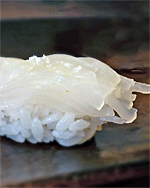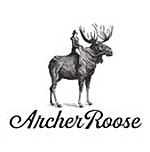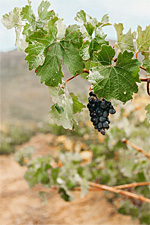King Cake: Epiphany and the Three Kings
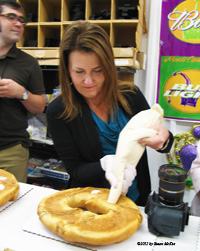 By Susan McKee
By Susan McKee
The Road Trips Foodie
OK, Road Trips Foodies: it’s quiz time. Why is the traditional dessert served each January 6 called a king cake?
Those of you who learned about Christian holidays probably mustered up the memory of the Three Kings (or Magi). You know, the three “wise men from the East” who brought gifts of gold, frankincense and myrrh to Jesus in Bethlehem 12 days after his birth (do the “12 days of Christmas” ring any bells?).
In eastern rite Christian churches, January 6 is a feast day that celebrates the revelation of God the Son as a human being in Jesus. (The “king” in king cake, thus has a double meaning: the Three Kings who brought gifts and Jesus, Christ the King.)
That’s why, hidden in the king cake is a small plastic baby, representing Jesus. Tradition has it that the person at the 12th Night Party who’s served the piece of the cake containing the baby is obligated to bring the king cake to the next year’s celebration. Of course, the trinket hasn’t always been a baby: the traditional choice is a bean, gilded or not.
January 6 also is the traditional kick-off to the carnival season — that raucous festival in Roman Catholic majority areas that leads up to the austerity of Lent. (Are those brain synapses firing yet?) Yes, carnival comes to an end on Mardi Gras — Fat Tuesday — which is the last day to party and feast until Easter arrives.
In the United States, the place known best for king cakes is southern Louisiana where it’s taken the shape of a dough wreath filled with (typically) cream cheese and festooned with icing and/or colored sugar in the purple, green and gold colors of carnival.
Purple, Green, and Gold
According to European heraldic traditions, the purple represents justice; green, faith, and gold, power. Some sources say that these colors were chosen by Grand Duke Alexis Alexandrovitch Romanoff of Russia during a visit to New Orleans during Mardi Gras in 1872.
Your Road Trips Foodie had a chance to decorate her own king cake during a visit to Louisiana a few years ago sponsored by the Lake Charles/Southwest Louisiana Convention & Visitors Bureau. Our little group shoehorned ourselves into the back room of Misse’s Grocery, 106 East Lincoln Street, Sulphur, Louisiana, and set to put the finishing touches on cakes they’d already baked for us.
We used gigantic pastry tubes to insert the filling (most of us chose cream cheese, although there were other flavors, including raspberry and praline) but the most fun came with the decorating. Minimalism is not the goal here, but lavish, over the top embellishments — including Mardi Gras beads in the requisite colors.
There are lots of places in Louisiana that’ll send you a ready-made king cake. Of course, I recommend Misse’s Grocery near Lake Charles (337:527-6924), but other options include Bayou Bakery, Haydel’s Bakery and Manny Randazzo.
 Here’s my king cake, boxed and ready for Epiphany feasting!
Here’s my king cake, boxed and ready for Epiphany feasting!
(Photos and video © Susan McKee)
[Originally published on Road Trips for Foodies January 6, 2013]


